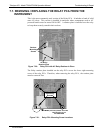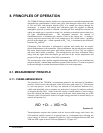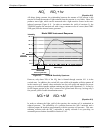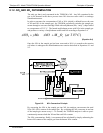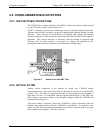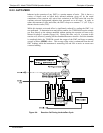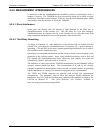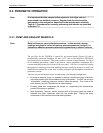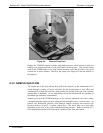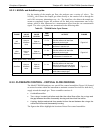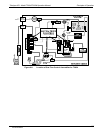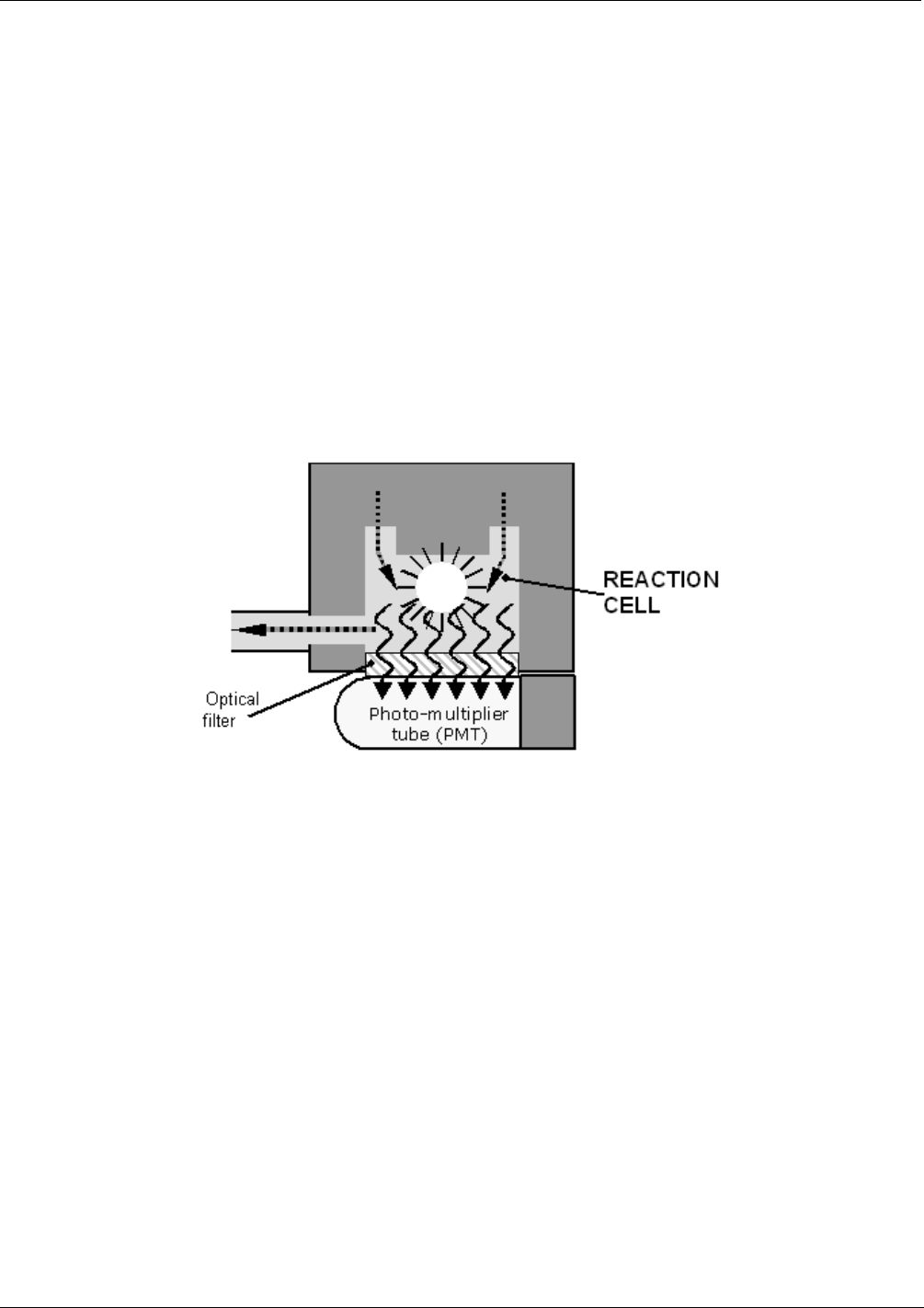
Principles of Operation Teledyne API - Model T200H/T200M Operation Manual
270
8.2. CHEMILUMINESCENCE DETECTION
8.2.1. THE PHOTO MULTIPLIER TUBE
The T200H/M uses a photo-multiplier tube (PMT) to detect the amount of light created
by the NO and O
3
reaction in the reaction cell.
A PMT is typically a vacuum tube containing a variety of specially designed electrodes.
Photons enter the PMT and strike a negatively charged photo cathode causing it to emit
electrons. These electrons are accelerated by an applied high voltage and multiply
through a sequence of such acceleration steps (dynodes) until a useable current signal is
generated. This current increases or decreases with the amount of detected light
(Section 10.4.3 for more details), is converted to a voltage and amplified by the
preamplifier board and then reported to the motherboard’s analog inputs.
Figure 8-3: Reaction Cell with PMT Tube
8.2.2. OPTICAL FILTER
Another critical component in the method by which your T200H/M detects
chemiluminescence is the optical filter that lies between the reaction cell and the PMT
(Figure: 10-3). This filter is a high pass filter that is only transparent to wavelengths of
light above 645 nm. In conjunction with the response characteristics of the PMT, this
filter creates a very narrow window of wavelengths of light to which the T200H/M will
respond (refer to Figure 8-1).
The narrow band of sensitivit
y allows the T200H/M to ignore extraneous light and
radiation that might interfere with the T200H/M’s measurement. For instance, some
oxides of sulfur can also undergo chemiluminescence when in contact with O
3
but emit
light at shorter wavelengths (~ 260 nm to 480 nm).
07270B DCN6512




